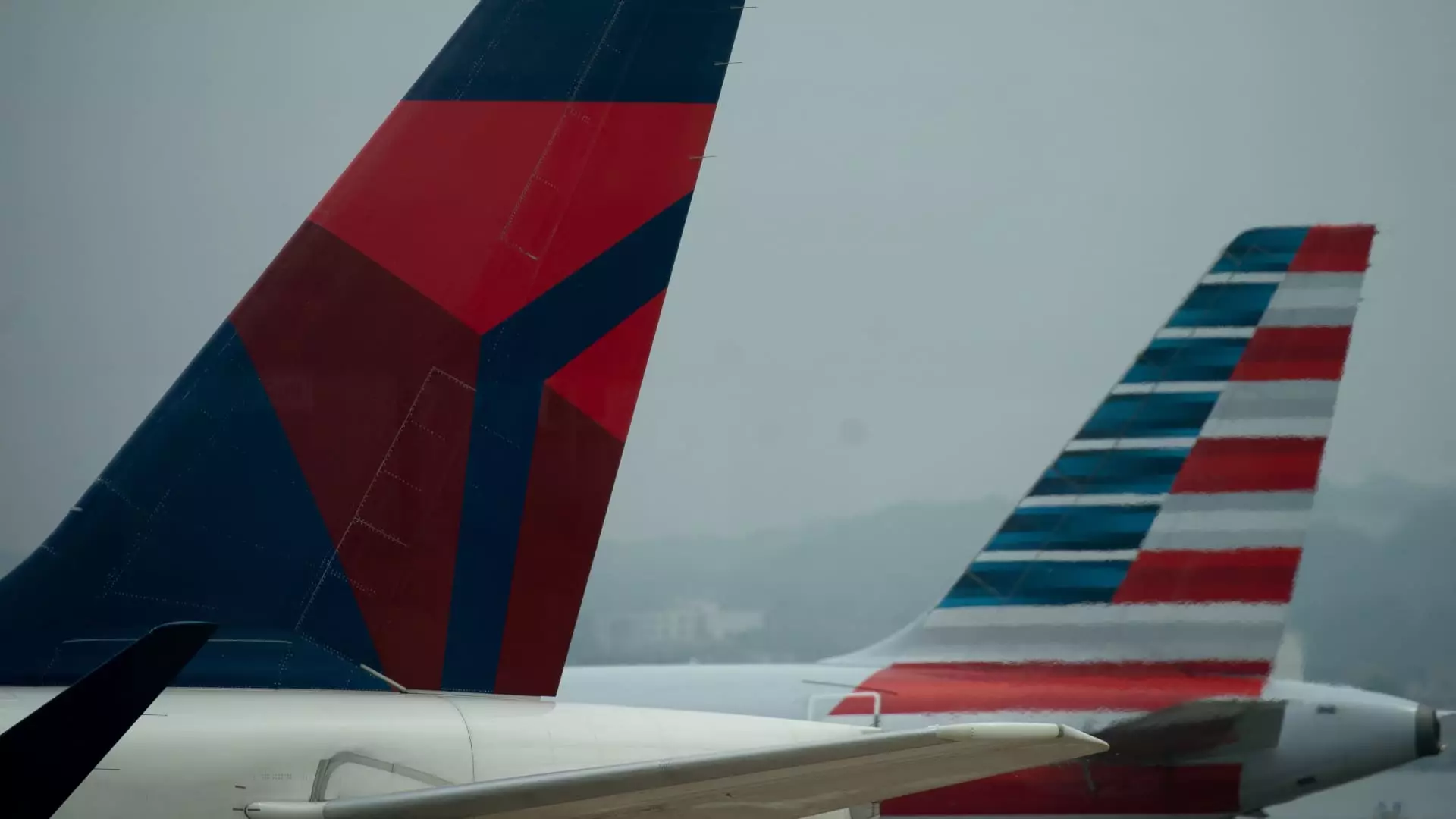The airline industry, once soaring with optimism following a post-pandemic travel resurgence, is now grappling with a stark reality: deteriorating profit and sales forecasts. Major carriers like American Airlines and Delta are adjusting their first-quarter estimates downwards, revealing a troubling trend: the softer economic landscape is significantly impacting travel demand. American Airlines recently updated its outlook, estimating losses between 60 cents to 80 cents per share, a substantial increase from earlier predictions. This downward revision, coupled with plateauing revenue figures, suggests that despite a growing market, external influences are stymying the industry’s recovery.
Delta Air Lines followed suit by slashing its projections, citing a reduction in consumer and corporate confidence driven by macroeconomic uncertainties. This scenario is reminiscent of a delicate ecosystem where even subtle disturbances have rippling effects. Airlines, often seen as barometers for economic health, are sending signals that caution reigns among travelers and businesses alike.
Factors Contributing to the Downturn
Several intertwined factors are contributing to this aviation slowdown. A notable influence has been the unfortunate collision involving American Airlines’ regional jet and an Army helicopter earlier this year, which has cast a shadow over the brand’s reputation and operational stability. Moreover, domestic leisure travel, a significant revenue stream, faces pressure, particularly as travelers weigh their options amid economic anxieties. The lingering effects of political decisions, such as altered tariffs and government cutbacks, add to the caution.
Ed Bastian, the CEO of Delta, highlighted a general hesitancy permeating travel decisions. His observation that consumers are waiting to see how these economic elements play out reflects a broader sentiment of uncertainty plaguing the market. While travel was once an impulsive decision for many, recent times have transformed it into a calculated risk.
The Impact on Business Operations
This cautious approach to travel is not merely a consumer-driven phenomenon. Carrier executives are feeling the pinch and acting accordingly. For instance, United Airlines has opted to retire 21 aircraft prematurely, a decision aimed at saving substantial repair costs. Such moves spotlight the industry’s need to adapt to an evolving marketplace that demands flexibility and innovation. While trimming the fleet may seem like a straightforward cost-cutting measure, it signals a broader need for agility in strategies.
The airline sector’s reliance on government travel has also come under scrutiny, accounting for a tiny fraction of overall business yet representing a segment that is feeling the squeeze. Changes in administration and resultant policy shifts have left airlines navigating a turbulent regulatory landscape, further complicating their recovery strategies.
Long-term Optimism Amid Immediate Challenges
Despite the pressing challenges of the present, airlines appear to be clinging to a glimmer of long-term optimism. Investment in long-haul international flights and premium travel is still a bright spot, as consumer preferences evolve towards more personalized and luxurious experiences. Scott Kirby, CEO of United Airlines, underscored this optimism at the recent JPMorgan conference, indicating that while demand may currently face obstacles, the underlying trends show potential for growth.
This perspective reflects a nuanced understanding of the market’s inevitability: consumer behavior shifts, and industries must innovatively respond. The promise of recovery, buoyed by demographic trends favoring travel and new service offerings, suggests that airlines that can weather this storm may come out stronger.
Pricing Strategies and Consumer Sentiment
In a significant shift, Southwest Airlines announced that it would end its “two bags fly free” policy, opting to charge for checked luggage starting in May. While the immediate reaction in the stock market was positive—indicating investors’ belief in this revenue-generating move—it’s a clear signal of shifting consumer sentiment. Customers accustomed to no added baggage fees may bristle, leading to potential repercussions on loyalty and trust.
Ultimately, these pricing strategies and operational adjustments resonate with the underlying need for balance between profitability and customer satisfaction. Airlines must navigate increasing costs while preserving the integrity of their service—an ever-present challenge in an industry characterized by razor-thin margins.
As the airline industry updates its compass in these uncertain times, a collective drive towards adaptability and innovation will be essential. Only through strategic changes and keen awareness of consumer needs can airlines hope to reclaim their altitude and soar towards a thriving future.

